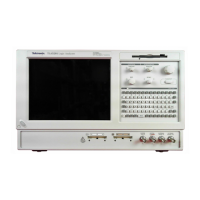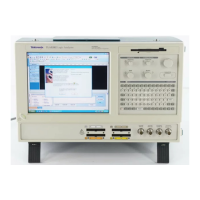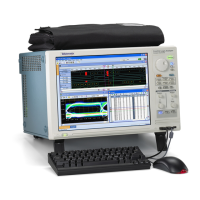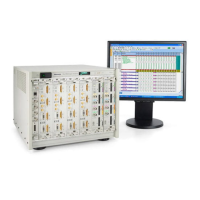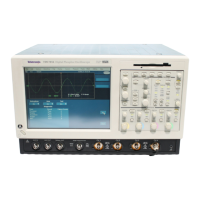Glossary
Hall device
A thin, rectangular piece of semiconductor material located in the c ore of the
current probe
. The Hall device uses the Hall effect for DC and low-frequency
AC measurements.
Hall effect
The effect that produces a voltage potential in the Hall device when magnetic
lines of force pass through the device. The voltage potential is directly
proportional to the magnetic field strength. The voltage polarity is determined
by the magn
etic field polarity. A bias supply is required to produce the Hall
effect. The TCP300 and TCP400 Series current probes use the Hall effect for
DC and low-frequency AC measurements.
insertion impedance
The equivalent series impedance introduced to a test circuit when the current
probe is clamped around a test conductor.
magnetic susceptibility
A figure expressing the amount of current induced into the probe by an
external magnetic field of known intensity. The lower the figure is, the less
the probe is influenced by external magnetic fields.
satu
ration
A condition that occurs when the magnetic field strength in the probe core
exc
eeds the maximum level that the core can absorb. When saturation occurs
the probe no longer responds linearly to an increase in magnetic field strength,
resulting in measurement inaccuracies. A current overload condition will
cause core saturation. After saturation occurs, the probe core usually retains
residual magnetism, which continues to produce inaccuracies until the probe
is degaussed. The probe should be degaussed after saturation occurs.
96 TCPA300/400 Amplifiers and TCP300/400 Series Current Probes Service Manual

